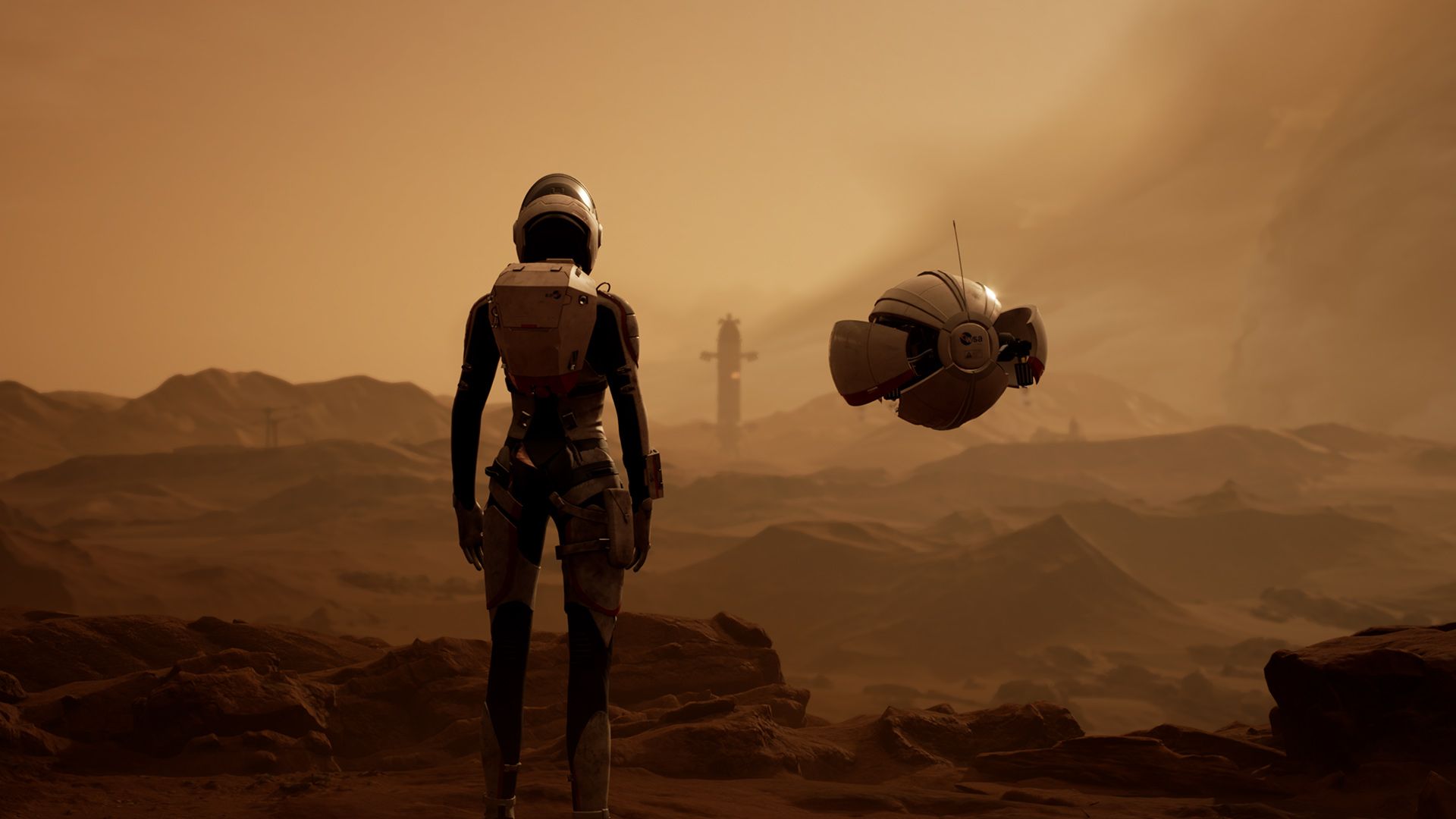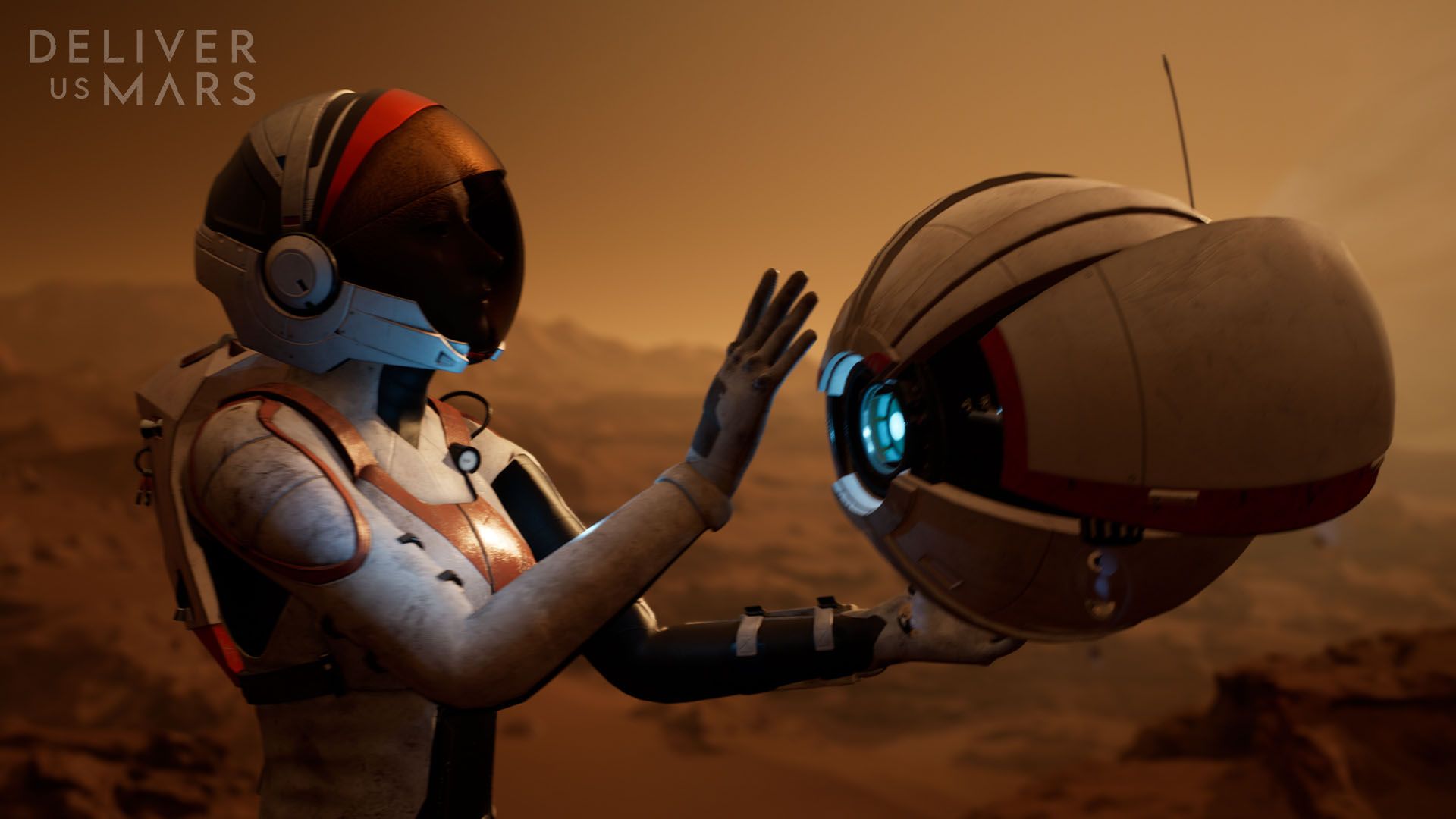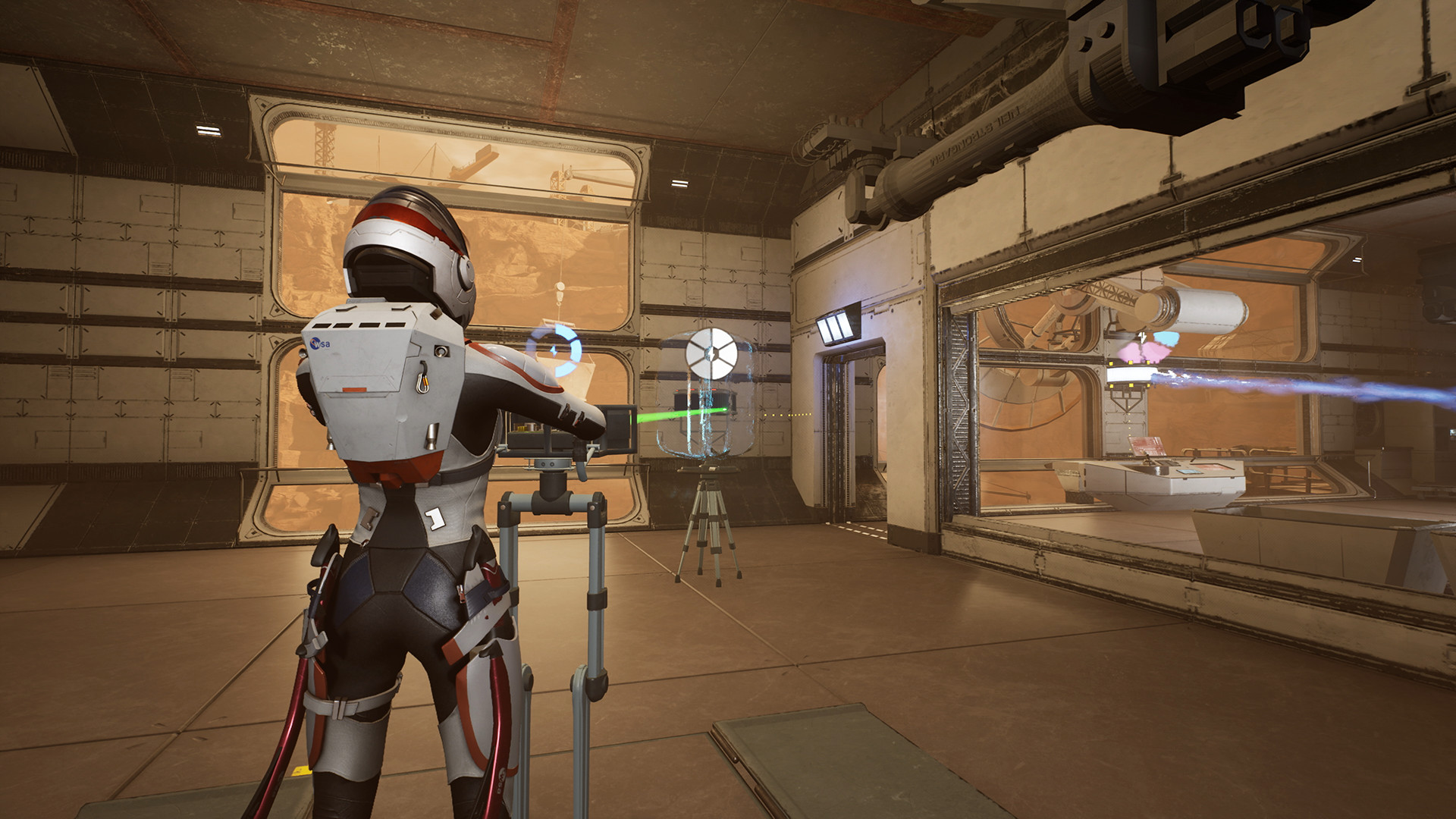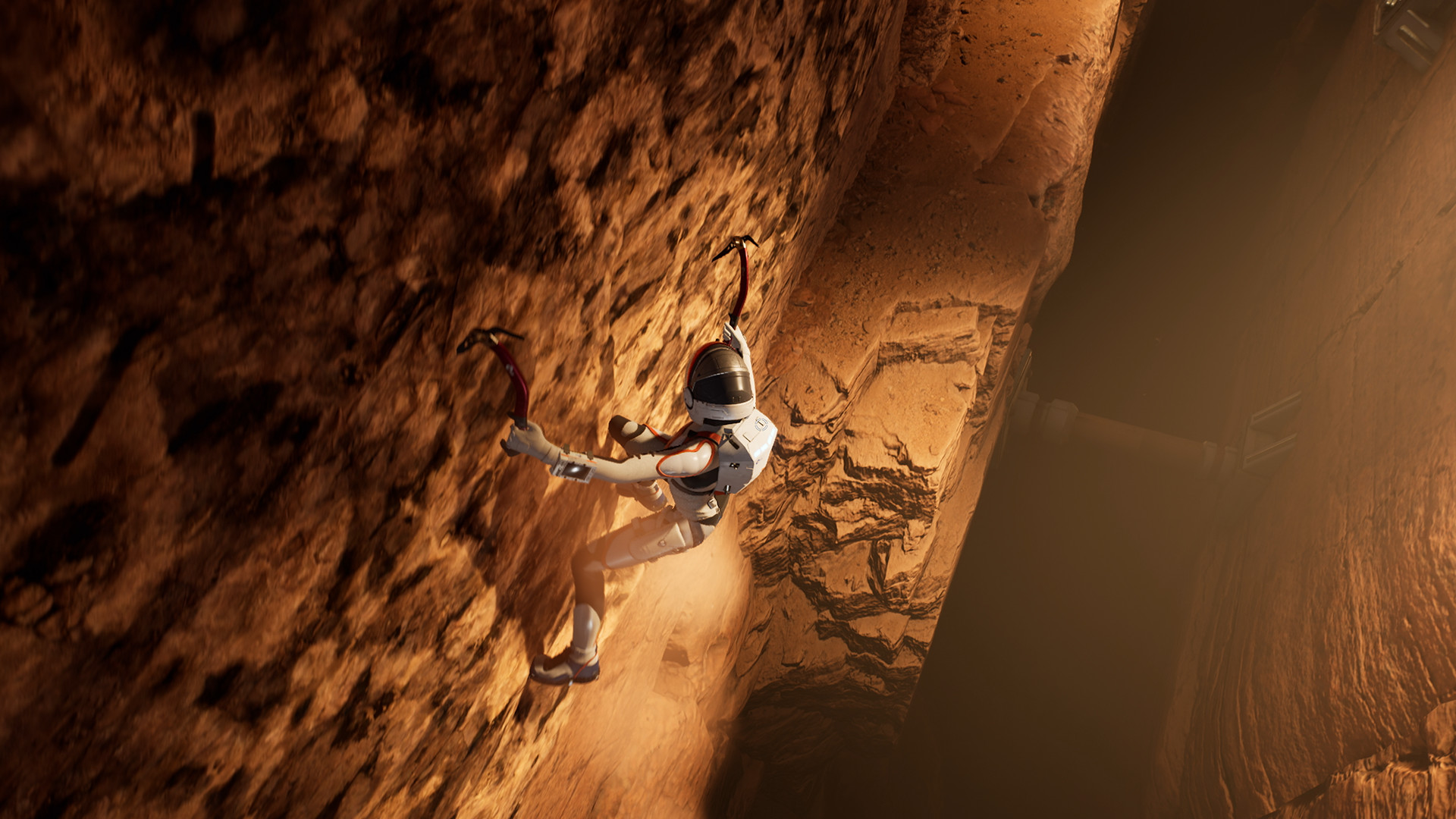
There’s no shortage of major AAA games set to launch in 2023 (right from the very first month, in fact), but if you veer off that path and look deeper into the indie and so-called AA space, you’ll find yet more promising games that may very well end up surprising people. One game that’s caught the eye is KeokeN Interactive’s sci-fi adventure title Deliver Us Mars, the sequel to Deliver Us the Moon, which is promising to make some interesting improvements with its storytelling, gameplay, and more. Ahead of its launch in February, here, we’re going to take a look at a few key details that you should know about the game.
STORY
Deliver Us the Moon’s story was something of a rollercoaster, and by the time it came to an end, several revelations had come to light that, as you may have guessed, are going to serve as setup for the sequel. Most of the Helium-3 reserves on the moon bases and colonies were stolen and taken away to Mars aboard ARK colony ships, and now, ten years after the events of the first game, Earth is once again on the verge of extinction. Getting hands on the stolen Helium-3 – the last-known energy source that can solve the planet’s crisis – is the only way to ensure survival, and to that end, humanity puts together one final last-ditch mission- one that will send a team of astronauts to Mars, retrieve the stolen ARK colony ships, and unravel the mystery surrounding Outward, the group that stole them in the first place.
PROTAGONIST
Deliver Us Mars will see players stepping into the shoes of a new protagonist (which should be obvious, given how the first game ended). Players will play as Kathy Johanson, the youngest astronaut on Earth. Johanson is, of course, a name you’ll be very familiar with if you played the first game- Kathy’s father, Isaac, was the one who developed the whole system on the moon that was used to transmit Helium-3 to Earth, while Kathy’s sister, Claire, briefly appeared in the game’s epilogue. It seems safe to assume that both characters will continue to have a role to play in the story in some form or the other, and that the Johanson family and its history are going to be even more prominent in the sequel than they were in the original game.
In fact, according to narrative director Raynor Arkenbout, a desire to reconnect with her father is partly why she’s headed to Mars in the first place. Speaking with GamingBolt in a recent interview, Arkenbout said, “Her journey is very much fuelled by a personal need to find her father, which ties in with the grander mission of Deliver Us Mars, which is to locate the organisation Outward on the Red Planet where the ARKs are kept. She dearly misses him, and wants to believe he’s still alive years after he abandoned her to join Outward. Kathy has this very basic yearning for family, then, which sometimes conflicts with the mission. In that way, Kathy stays very relatable throughout the game: she’s torn by her personal need to reconcile her relationship with her father, while trying to remain rational about completing the mission at hand.”
SETTING
With the sequel swapping the moon for Mars as its setting, how is that going to impact gameplay and its design in general? Well, from visual design to environmental diversity and more, you should expect plenty of changes. In the aforementioned interview, narrative director Raynor Arkenbout explained: “Obviously there will be a visual difference – that’s the most significant change. We pushed hard on that side of things and gave our game real environmental diversity by visiting more biomes this time: the red sands of Mars, an icy valley, an abandoned space station – plus there are sections set on Earth, and a few surprises we’re keeping for launch. This time we got to play way more with lighting and using the sun cycle to help set the atmosphere of each chapter in the story – we made the most of these techniques, for sure.”
EXPANDED STORYTELLING
Deliver Us Mars is looking to step things up over its predecessor in a number of ways, including how it chooses to tell its story. Discovering audio logs and holograms and learning more about the mysteries of the past was a big part of the experience in Deliver Us the Moon, and on that front, Deliver Us Mars is going to, well, deliver more of the same. In particular, the developers say that the mysteries surrounding Outward and its history will be the primary focus of that side of the story.
When it comes to the present, however, Deliver Us Mars will take a much more active approach to storytelling. Not only does it have a more fleshed out protagonist who has her own personal stakes in the story – which wasn’t necessarily the case in the first game – Kathy will also have supporting characters surrounding her to lend more weight to the story.
PERFORMANCE CAPTURE
Given the much more active approach Deliver Us Mars is taking to how it unfolds its narrative, it’s no surprise that KeokeN Interactive has stepped things up on that front behind the scenes as well. In particular, that comes with the usage of performance capture for the game, which means we can expect more nuanced and relatable performances from actors as part of cinematics. “We’ve actually gone a bit further than mo-cap for Deliver Us Mars. We actually did performance capture, which means that we simultaneously recorded our actors’ voiceover and facial performance as we captured their performance,” Arkenbout said to GamingBolt. “This gives the scenes so much life that you will really see shining through in the cinematics. Because the actors got to play the scenes and really got to embody their characters during the shoot, they could bring a certain realness and authenticity to the performances.”
PUZZLES
Moving on to the gameplay, what sort of changes and refinements should we expect to see in the game? Puzzles in particular were a crucial part of the core gameplay loop in Deliver Us the Moon, and will continue to be prominent in its sequel- and according to the developers, they’ll also be much more engaging. In a nutshell, it seems like Deliver Us Mars is going to focus on puzzle design that’s much more systemic in nature, which means the game will attempt to create a consistent logic language throughout the entire game that will allow for puzzles that are more interactive and reactive.
“The first thing we wanted to do with our game mechanics – and especially our puzzles – was to make them more systemic,” Arkenbout told GamingBolt. “We wanted to create gameplay types that our players could learn and then master across the course of the game. So for example, one of the main puzzle types in the game involves you moving STREAME beams around a room, which are controlled using turrets that direct a power source to the location you’re pointing at. You use them to power up an object, obstacle or door – but the numerical values of the STREAME beams have to match the object you’re trying to activate, or it won’t work. The first one is pretty simple to figure out, but very soon, we mix it up by throwing in new variables and tools – you end up with rooms full of these crisscrossing beams, dampeners and splitters as you try to figure out the solution, and match the power values up perfectly.”
TRAVERSAL
Traversal and movement mechanics will also see some significant changes in Deliver Us Mars, and the most significant of them all is undoubtedly going to be Kathy’s pair of pickaxes. Using these axes in conjunction to get around environments and climb and scale much more vertical surfaces is going to be a crucial part of the experience. Speaking about the same, Arkenbout said to GamingBolt: “The pickaxe and climbing gameplay really takes centerstage in Deliver Us Mars, so that has massively changed our approach to level design. And by ‘changed’, I do mean ‘improved’. It really increases the tension for the player as traversal and platforming become more difficult across the game, requiring more skill and attention this time around. You also get these levels with a real sense of verticality to them: that’s something we can pull off when we have a main character who’s able to scale down a cliff using her climbing axes in a matter of seconds.”
LENGTH
Nobody’s expecting Deliver Us Mars to be a massive behemoth of a game in terms of its size and content offerings, but fans of its predecessor will still be hoping for a meatier adventure. According to the game’s developers, it’s certainly going to be that. While KeokeN Interactive hasn’t given any specific details about the game’s runtime, the developer has said that it is going to be “significantly longer” than its predecessor- which, in turn, is roughly five hours long. Hopefully that means we’re looking at a game that’s at least 7-8 hours long- but again, that’s not something that the devs have spoken about in too much detail.





















